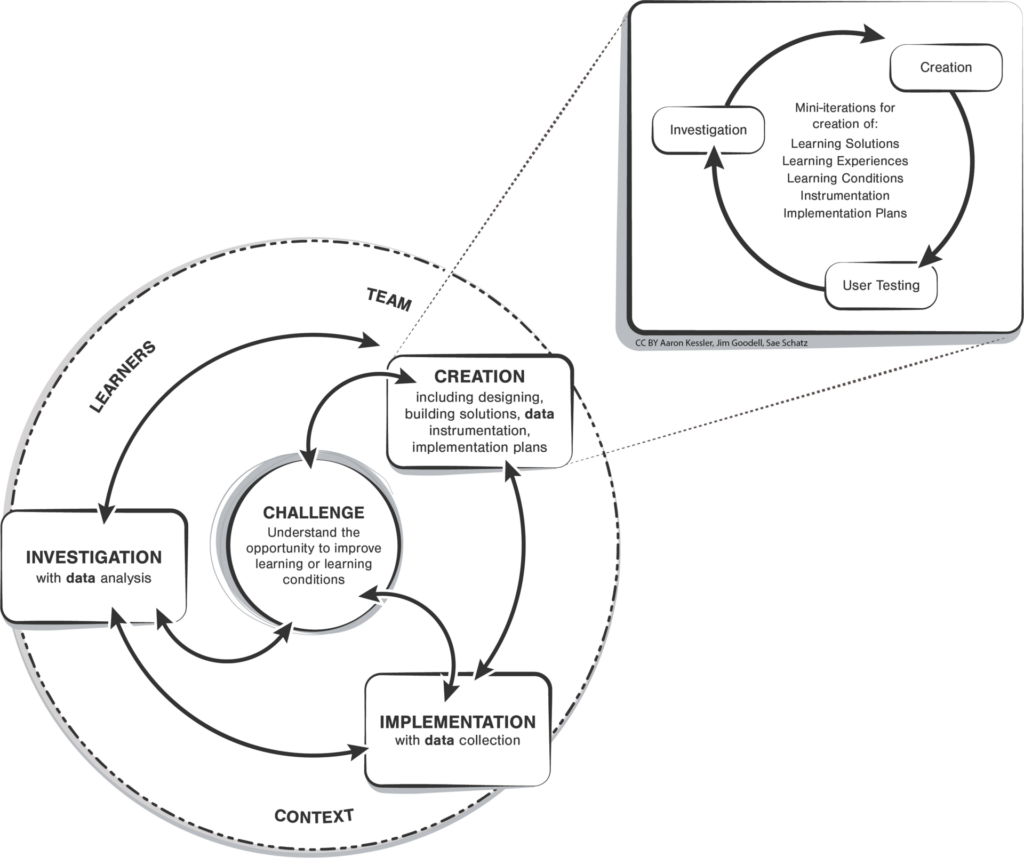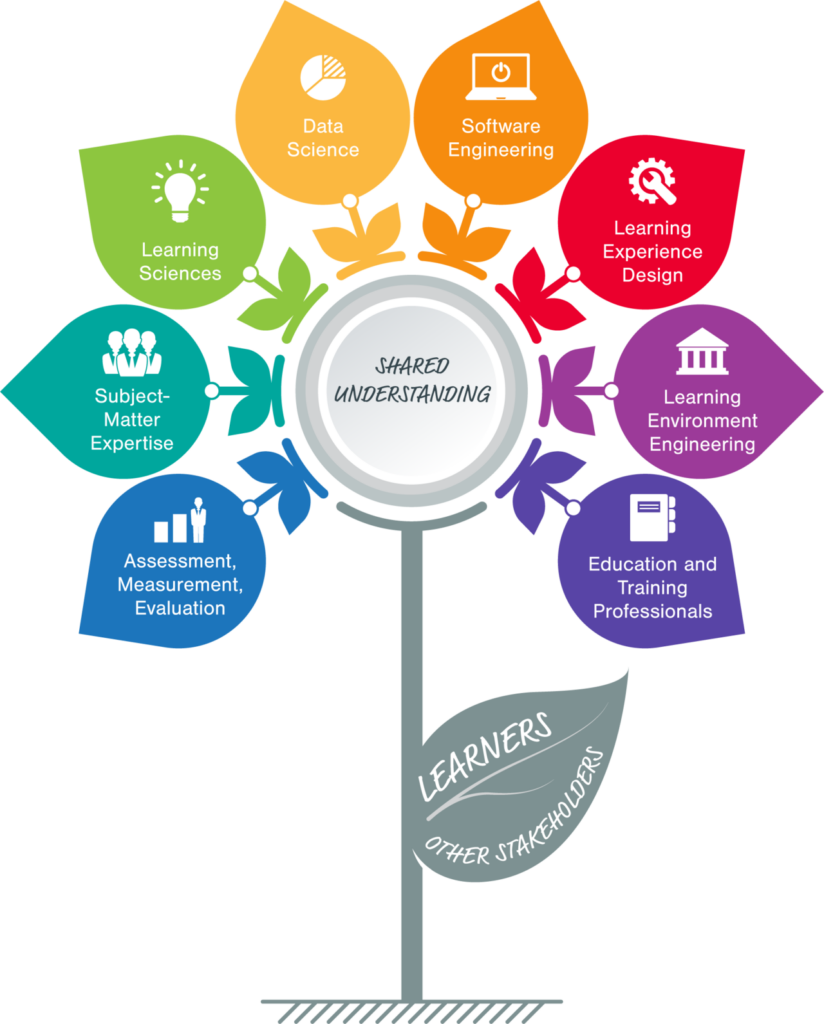What is Learning Engineering?
Learning Engineering is a process and practice that
- applies the learning sciences
- using human-centered and engineering design methodologies and
- [Iterative] data-informed decision making
to support learners and their learning.
Some practices come from a tradition of learning design disciplines (UXD, ID/ISD, cognitive/ed psych, learning sciences) other parts from science and engineering (systems engineering, feedback loops, computer science, data sciences, psychometrics, motivational sciences, learning sciences).
What does the Learning Engineering process look like?
The parts of the process are likely considered and acted on concurrently. People engaging in this process might be contextually situated within well defined and clearly articulated problem spaces, while others might be operating in diverse and ill-defined spaces. The key is that regardless of where you might fall on this continuum, the process used to develop solutions to enable learners to engage in the learning experience is organized in ways that leverage the process. (Goodell et al., 2020).
Start with the challenge associated with learners and learning. These challenges are often complex and will likely require decisions to be made across multiple levels of the system:
- Context: What is the contextual setting that the challenge is situated? What are the unique characteristics of the learning environment?
- Learners: Who are the learners (and stakeholders) identified in the challenge?
- Team: What skills and knowledge are needed to work on the challenge? The people on the team will differ depending on the challenge or problem to be addressed. It may be a single person with a broad set of skills or an interdisciplinary team of professionals with expertise in range of areas:
Create the solution for the challenge. Creation has several components:
- Design the solution using techniques such as human-centered design, engineering process, learning sciences methods, and/or instructional/learning experience design.
- Instrument the data. What data will demonstrate how the challenge is improving / progressing / succeeding? Determine where the data will come from, data definitions, measurement methods, measurement instruments, collection methods.
- Iterate the design. Engage in design-build iterative cycles with the learners and stakeholders.
Implement the designed solution in authentic ways and collect data throughout implementation. Iterate the design and implementation of the solution as data is reviewed to determine if the solution is addressing or improving the problem.
Investigate with data analysis to explore outcomes. Results of data analysis will inform the solution’s ability to fully/ideally solve the problem. It may result in iteration on the design, the need for further implementation, or identification of a new problem.
Iterate continuously throughout the process.
References:
Goodell, J. and Koldner, J., editors. (2023). Learning Engineering Toolkit: Evidence-Based Practices from the Learning Sciences, Instructional Design, and Beyond.
Goodell, J., Kessler, A., Kurzweil, D., Koldner, J. (2020.) Competencies of Learning Engineering Teams and Team Members. In IEEE ICICLE proceedings of the 2019 Conference on Learning Engineering, Arlington, VA, May 2019.
This work is licensed under a Creative Commons Attribution-NonCommercial-ShareAlike 4.0 International License.




